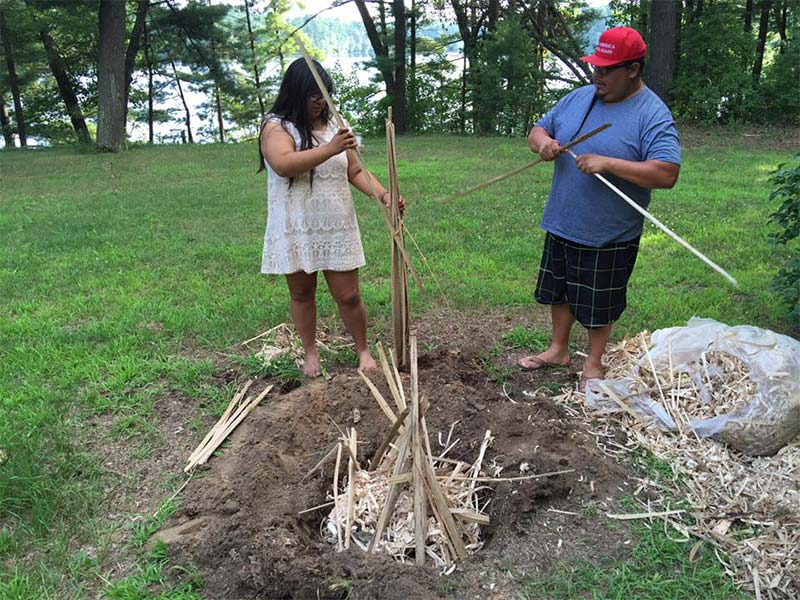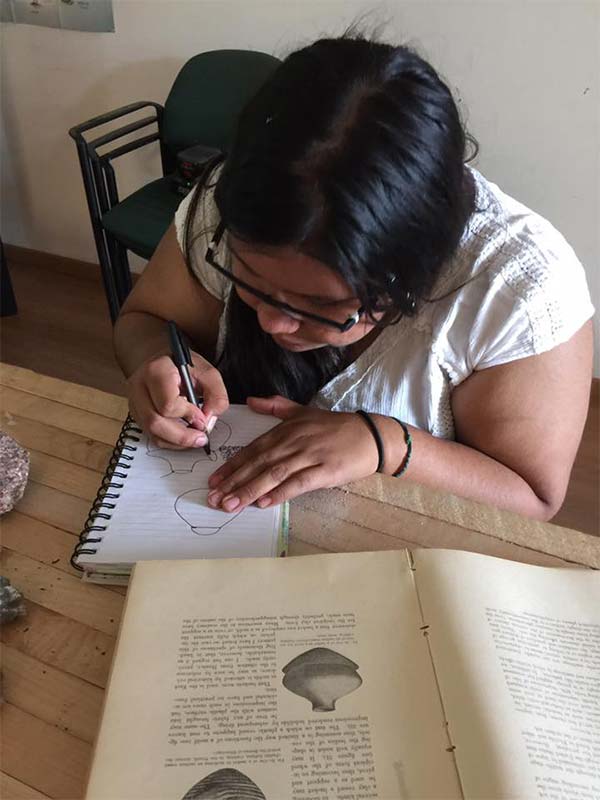Menominee Tribe of Wisconsin
Keshena, WI
Late Prehistoric Menominee Lifeways
Our Phase 1 grant supported the design and construction of an outdoor exhibit on the grounds of the Menominee Cultural Museum and the Menominee Logging Museum. The exhibit included a demonstration garden, a summer bark lodge, and an arbor. We also plan to harvest the seeds from the demonstration garden for a community seed bank.
Construction of the exhibit was based on ongoing archaeological and oral history research. Historic Preservation Staff, community volunteers, and Menominee High School students constructed the raised-bed demonstration garden, located adjacent to the entry drive to the museum. The garden site was cleared and burned with the assistance of the Menominee Foresters, tilled with digging sticks and bison scapula hoes, and planted with heirloom crops. Plantings included sunflower, maize, beans, and squash, all of which had been identified archaeologically by the Tropical Plant Laboratory at the Smithsonian Institution through phytolith analyses or carbonized plant remains. A brush fence was constructed based on 19th century Menominee settlement reports in a 1921 monograph, “Menominee Material Culture,” using cedar poles and bark, basswood bark, sinew, and rawhide. Volunteers and students maintained the garden and also served as guides and interpreters for museum visitors.
The original intent of the project was to provide an interesting exhibit to communicate the results of ongoing research by the Historic Preservation Office to the Menominee community and to non-Tribal members visiting the museum, provide an activity for summer youth, and add to research, such as the number of man-hours needed to construct a summer bark lodge. The community interest stimulated by the garden and bark lodge significantly surpassed our expectations. Feedback from community members was overwhelmingly positive. Elders, in particular, provided us with insights that we had not contemplated. We learned that the labor requirements using sticks and bison scapula were, by any measure, daunting! We were surprised to observe that insect predation into the demonstration garden was minimal – which may have been a benefit of the burning process. Based on input from a member of the Menominee Language and Culture Commission who is a traditional gardener, we included both English and Menominee labels on our exhibit. The project received 660 hours of volunteer labor.
In constructing our bark lodge, we worked from the written descriptions in literature. Unfortunately, our calculations must have been off, because the roof of our lodge collapsed during the winter under the heavy snows. We decided to rebuild the lodge in summer 2017 using a different roof pitch.
A major unexpected benefit of our project was the realization that the garden exhibit needed to increase in size if we were to plant sufficient quantities for a seed bank. We decided to double the size of the garden in 2017. We will now have enough seed to distribute to community members at no cost.
A big surprise was the interest the project stimulated in the community. The project became a gathering place for community members who wanted to become involved. They wanted to participate–all the while sharing information about cultivating, weeding, and but mostly the garden and lodge became a place to socialize. We realized that our garden may have stimulated a similar outcome as gardens likely did in late prehistoric times – serving to embrace community solidarity and socialization.
CRF FAQ
CRF PDFs
Contact
Cultural Resource Fund
Peggy Mainor
Executive Director,
The MICA Group
Phone: 505-415-0787




